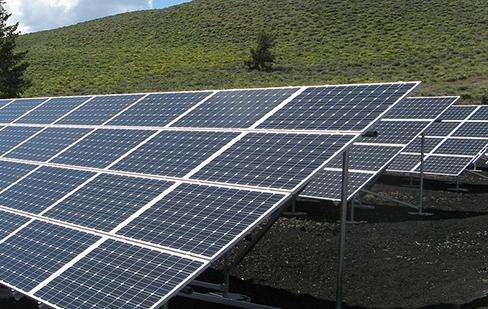Wind energy. Gansu province is the only place where cold air from northwest China must move eastward without any obstacles. Therefore, the air is dry and the wind is strong in winter and spring, which is conducive to wind power generation. in Gansu province. Wind energy is the kinetic energy produced by the movement of air. A converted form of solar energy. Due to the uneven heating of various parts of the earth's surface caused by solar radiation, the pressure distribution in the atmosphere is unbalanced. Under the action of the horizontal pressure gradient, the air moves in the horizontal direction to form wind.
At present, what are the shortcomings of wind and solar energy?
In 2009: thermal energy accounted for about 80%, hydropower accounted for about 16% and the remaining wind energy Electric energy, nuclear energy,etc. are now growing vigorously. Develop clean energy, so the proportion of thermal energy will decrease, and the trend is that the proportion of clean energy such as hydropower will increase. (Search China's electricity supply structure online) In 2010, annual electricity consumption was 4 trillion kWh. (Search China's annual electricity consumption online) It is not possible to stop coal-fired power (thermal power): 1. Developing other clean energy requires a process. The hydroelectric construction cycle lasts from 5 to 20 years. Although many power plants can be built at the same time, it also takes time. The site selection requirements for nuclear power are relatively strict, safety must be considered, and development will not be too rapid. Wind energy reserveshave limited. 2. Thermal energy has advantages that other electric energies do not have: stability and few restrictions on plant site conditions. Most hydropower is seasonal, and electricity production varies significantly between wet and dry periods. Wind power is also limited by the uncertainty of wind power. 3. Linked to the local economy. This involves the sale of coal companies as well as the operation and development of power companies. By shutting down coal-fired power, coal mines lost huge, high-quality, stable customers. Electric power giants that focus primarily on thermal power cannot move into developing other energy sources if they don't have food to eat, they certainly won't. 4. Disadvantages of nuclear energy. The cost of power plantsis higher than that of thermal energy. There are no international conclusions on the safety of nuclear energy. As a large amount of cooling water is required, it can only be built in areas where water is abundant and seismic intensity is low. The biggest problem is that the treatment of nuclear waste currently involves landfilling or returning it for disposal. Landfilling is the stupidest method and will inevitably pollute the environment; Recycling requires specialized technology, equipment and processing plants. Current processing capacity is too low and new construction and expansion will take time. (Online search for the shortcomings of nuclear energy and nuclear waste disposal)
The shortcomings of these two power generation energy sources are as follows:
1 The denEnergy sity is relatively low: wind power and the disadvantage of solar power generation is its low energy density and the need for a large area of land to obtain sufficient energy. Wind and solar energy production requires more land resources.
2. Limited by natural conditions: Disadvantages of wind and solar power generation include that wind and solar power generation is affected by factors such as weather, season, geographic location, etc., and continuity. and stable power supply cannot be guaranteed.
3. Energy storage technology is not yet mature: The disadvantages of wind and solar power generation include that energy storage technology is not yet mature and it is difficult to solve the problem of unstable electricity productionBefore. the breakthrough of energy storage technology, wind power and solar power generation proportion in the grid is limited.














